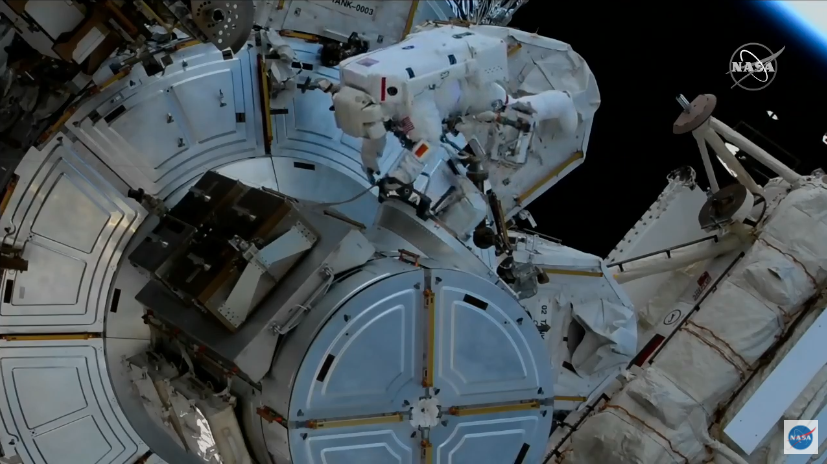After a Saturday Spacewalk, an Emergency Drill and Hardware Maintenance Fills the Crew’s Schedule

After a weekend that included the 237th spacewalk in support of assembly and maintenance for the International Space Station, featuring spacewalkers and NASA astronauts Victor Glover and Michael Hopkins, the Expedition 64 crew members got back to the business of science, switching out hardware and working around a comprehensive emergency drill on Monday.
Running through the emergency drill, the crewmates practiced their roles during various emergency scenarios, such as who would manage the procedures, gather equipment, and close hatches, all while maintaining constant communication with teams on the ground in Mission Control.
NASA Flight Engineer Shannon Walker performed post-spacewalk recharge maintenance to the Extravehicular Mobility Unit suits used in Saturday’s excursion, stowing them for later use.
Astronaut Kate Rubins worked to set up experiment hardware for Transparent Alloys, an ESA (European Space Agency) investigation focusing on microstructure evolution by comparing the effects of Earth’s gravity to microgravity, pinpointing the correlation in particle size, growth dynamics, and fluid flow.
Meanwhile, Soichi Noguchi of JAXA (Japan Aerospace Exploration Agency) spent time removing and replacing hardware — the Artificial Vision Unit — in the station’s cupola, where the crew often spends time observing natural Earth phenomena from their unique vantage approximately 250 miles above.
The crew wrapped up their workday with the Airborne Particulate Monitor (APM), installing instrument hardware and taking photo documentation. Air quality in crewed spacecraft is important for astronaut health and comfort, and the APM measures the concentration of both small and large particles in the air. Captured data will eventually be used to create a detailed mapping of the air quality aboard the space station, shedding light on the sources of different air particles and how they behave in this one-of-a-kind laboratory off the planet.
Learn more about station activities by following the space station blog, @space_station and @ISS_Research on Twitter as well as the ISS Facebook and ISS Instagram accounts.
from Space Station https://ift.tt/2NkkciO
Comments
Post a Comment